Yes depends on your distance to target for sure. Shame there is no Z12 on 4MP / 8MP. Just move your house closer to the road, sorted !But most of us are needing longer focal lengths, like Z12E and not Z4E. I am running 45mm and 52mm on my two LPR cams.
Challenge Accepted - 4K License Plate Recognition @ 85Ft with 4K S3 Camera (EmpireTech B58IR-Z4E-S3)
- Thread starter Wildcat_1
- Start date
You are using an out of date browser. It may not display this or other websites correctly.
You should upgrade or use an alternative browser.
You should upgrade or use an alternative browser.
bigredfish
Known around here
Couple of notes:
- You have to be careful when you're mentioning 5442, remember that series has been around forever. ANPR is NOT supported, NOT implemented on the S1 or S2 models of 5x42 cameras, period. However the new S3 cameras DO support ANPR (I showed how you can check the cam capabilities and what is being tagged in earlier posts) BUT critically has NOT been implemented yet. This is a key difference between S1, S2 and S3 versions. Now whether Dahua listens to my feedback, my bug report and completes implementation remains to be seen. However these cams DO support it, 100%. As I mentioned before, IF Dahua decides not to fully implement in FW then that is of course their choice and as I also mentioned before this is generally not to cannibalize from other models such as 7xxx or dedicated LPR traffic cams like I've reviewed before.
- What is mentioned above about 1/100, 1/250 and WDR is VERY situation and most important location and target dependent. YES, there are situations where if you have controlled choke points such as Entry/Access areas OR are lucky enough to control vehicles coming directly towards camera then in those situations you 100% can adjust down accordingly. I've shown this on MANY traffic camera reviews and videos. However, for general street deployments where you don't have ideal angles, you do have poor to no lighting, vehicles are traveling about 25 to 45 or higher miles per hour then you do have to deploy differently. Changing any one of these criteria 100% can assist. In other words, slower vehicles, more lighting (ideally distributed), better angle, lower height etc BUT unless you are deploying in those type of situations then using settings that increase your odds for the multitude of vehicles (fast, slow, hogging the middle of the road vs one side or other, large, small) and plates (high contrast, low contrast, black on white, white on color, dirty, clean) etc is where you benefit, as shown from the settings I've featured across this video. As I mentioned before thats the beauty of profiles on the V5 web UI is that you can setup your day/night and individual profiles which works really well when you have situations that benefit intense dialing in for target and location requirements that are different between times of day.
Now, as I call out, in those cases, 100% you should be deploying (to be fair you should anyway as I’ve mentioned for years) secondary and tertiary cameras (fixed wide, PTZ, both). This is the best of all worlds and using PTZ activation through NVR or NVR middleware as I’ve demonstrated before, takes your system to the next level.
- WDR (heck, any backlight mode) you have to be INCREDIBLY CAREFUL with using, especially in higher numbers. Why ? because it adds a lot of noise and creates motion blur . If you add this to the slower shutter speeds (1/100 or 1/120) most times you'll run into some issues. 1/250 which is the minimum I have and would ever recommend for vehicles (outside of course of controlled barrier entry points for example) is still susceptible to this based again on vehicle speed and angle of deployment. So use backlight modes, sparingly. My recommendation here is do NOT use them unless you have to.
- Always keep in mind that LPR/NPR/ and especially ALPR/ANPR is VERY dependent on a number of location, lighting and target attributes. This is why we always state this is an art and no 1 situation or deployment is the same as another which is why we all deploy specific to those target and location needs. The S3's are powerhouses for their series and cost. I’ve successfully deployed these for both day and night, LPR and ALPR (using the NVR) and the caps are great. Seeing 100’s of these now and the database on those installs is looking good
- IR strength again will come down to distance to target, IR illuminators in use, light on scene and angle to plate.
- As I've mentioned, definitely you can benefit from AI on NVR for units that support it. For example the XI, heck even the older IL support this too and you can use those for ANPR caps with the cams too.
- AcuPick 2.0 should not be dismissed however as it does feature (and will increase further) some very useful benefits such as Map Tracks is a very cool feature that I would like to see implemented in other areas of code. Tracking an identified target across 30 cameras with the click of button is something that should be part of regular operating features on the NVRs but at least it’s there in some form now which is great.
- Remember there is a big difference between x842 and x442 cameras in terms of capabilities, functions and critically, light gathering as well as noise ratio.
- As Steve and I have both said, we’re advocates and I have been for a long while on Video Metadata, that should be used most of the time. However, remember that as I mentioned toned before AcuPick 2.0 DOES also feature the Experience Database which is a great addition and super useful (will do a video on this too) which you lose IF you use Video Metadata only.
BTW Steve definitely update your settings on that cam in the pic above, leaving them all at 50 on these S3’s is too sharp and introduces noise as I mentioned and showed. Also, no one should be running 2D or 3D NR at 50 !
That leads me to one of the bugs I am filing too. When you switch off AcuPick mode it wipes out the image and exposure settings on reboot. This may be why your cam is all on defaults. Either way pointing that out as that is 1 of a number of nasty bugs I am currently tracking.
I’ll be doing more videos both on the fixed lens, the bug video + an NVR walkthrough on AcuPick 2.0 as well.
HTH
wow, what an answer
1. Yep VideoMetaData is available ONLY on latest WizMind-S series (5442-S3, 5842-S3, 5241-S3).. But Full WDR + longer shutter time + strong IR trick can/should work on other older models.. We use here Full WDR feature that it take overexposed elements (lights, strong IR reflection from car plates) from second/third shot taken at much shorter exposure time...
2,3,4,8, Your prolog - Yes, all settings are very depended on conditions & camera capabilities.. I only showed some idea how LPR/ANPR camera can be setup different for night conditions to have much better results (capture everything - cars, humans, streets and plates in sharp way). And Explained mechanism - how this work using Full WDR ability to take two/three shots with different exposure time per each video frame.
Main parameters which enables taking full image with moving cars and sharp car plates for night profile are:
- max exposure time between 1/100 (0.01s) and 1/250 (0.004s)..
- WDR in FULL mode (>= 50), which enables second/third shot at much faster shutter time.
- BW mode with strong IR for having strong car's plate reflection - which will overexpose main shot and will be taken by WDR algorithm from second/third much shorter one...
People should modify theirs parameters to conditions / camera capabilities..
If car plate is blurred then shorter / lower max exposure time..
If car plate is not visible then increase IR power or extend / increase exposure time...
Other parameters can fine tune image quality - but they are not so important as those three.
99% of picture is taken at longer exposure time - so noise is not so big.
Also Full WDR hinders / blocks some settings (gamma, sharpening etc) - they don't work as in normal backlight mode..
So one more time to everyone - simply try on Your LPR camera for night or two..
You don't loose anything, You can gain much better experience (full recording of cars/people/street and sharp plates at night in FULL WDR + strong IR mode)...
You are also gaining ability to run full Video MetaData (newest WizMind-S or -X cams) or IVS (older cams) AT NIGHT to take cars snapshots (in case of VMD also with plate snapshots).
5,7,9 - AcuPick 2.0 is very good feature wise and I use/promote it almost everywhere except street/LPR cams. For now (maybe Dahua will change in future) it blocks access to FULL Video MetaData mode... I hope also it will available on more camera models (new TIOC-PROs or new FullColor 5xx9-S2 available in Europe have only AcuPick 1.0
6 - XI is very nice with a lot of AI power.. But it cost >= 1k USD so it is not for everyone.. And it firmware is minimum one year behind 5xxx-EI (it don't have even full AcuPick 1.0 support - it's only available over HDMI interface, not Web interface). We wait for Dahua. I hope he will keep his promises
If we talk about bugs - it's more FULL Video MetaData (not disabling AcuPick) is playing/changing shutter/camera settings..
Several times on 7442 with Video MetaData enabled I found different settings than I thought I had left.
As I wrote VideoMetaData tries to play with some camera setting to have sharp plates..
Last edited:
Granted this test isn't with the 58IR-Z4E, but rather it is with the 54IR-Z4E-S3 version that I previously reviewed.
I wanted to try this WDR to see if it were really true what @steve1225 said about running greater than 50 WDR.
Granted this is a one night test and this camera wasn't set up for LPR but was set up to try to get clean captures of vehicles.
Shutter speed is 0-2.5ms
Here is with WDR off:
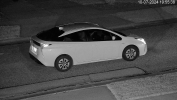
And with WDR on at 60 (all other parameters stayed the same):
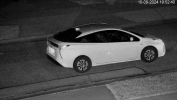
Which one do you think is better/cleaner?
Personally I think the image looks cleaner with WDR off. A bit of blur with WDR on. The plate also looks more washed out than with WDR off.
Tonight I will try my LPR cam and see what we get. Maybe the WDR trick only works when trying to capture plates LOL.
I wanted to try this WDR to see if it were really true what @steve1225 said about running greater than 50 WDR.
Granted this is a one night test and this camera wasn't set up for LPR but was set up to try to get clean captures of vehicles.
Shutter speed is 0-2.5ms
Here is with WDR off:

And with WDR on at 60 (all other parameters stayed the same):

Which one do you think is better/cleaner?
Personally I think the image looks cleaner with WDR off. A bit of blur with WDR on. The plate also looks more washed out than with WDR off.
Tonight I will try my LPR cam and see what we get. Maybe the WDR trick only works when trying to capture plates LOL.
@wittaj Yes WDR OFF is the better one.
As mentioned, unfortunately what Steve kindly shared is VERY situation dependent. Although I've tried this before when testing LPR and never got the desired results for the specific (and challenging) deployments, I did want to revisit too. For example in the case I featured in my video here, it 100% does not work due to speed of vehicle, sensor, motion blur introduced, FOV, focal length to the plate point etc. Thats NOT to say it cannot work in an ideal situation (as I mentioned the other day) BUT outside of entry/access, tight choke points (cul-de-sac, stop signs, 1 way street, limited access etc), vehicles with direct path to lens etc + critically, the right lighting (so you don't blind with IR), it often times is more miss than hit. Regardless you definitely (as I know you already do) benefit from multiple cams covering the area in wide, LPR (ALPR during day)+PTZ etc.
So definitely always down with people trying things as like I said, LPR/ALPR NPR/APR, is an art. Just note that as all of us know, it falls into the YMMV category.
As mentioned, unfortunately what Steve kindly shared is VERY situation dependent. Although I've tried this before when testing LPR and never got the desired results for the specific (and challenging) deployments, I did want to revisit too. For example in the case I featured in my video here, it 100% does not work due to speed of vehicle, sensor, motion blur introduced, FOV, focal length to the plate point etc. Thats NOT to say it cannot work in an ideal situation (as I mentioned the other day) BUT outside of entry/access, tight choke points (cul-de-sac, stop signs, 1 way street, limited access etc), vehicles with direct path to lens etc + critically, the right lighting (so you don't blind with IR), it often times is more miss than hit. Regardless you definitely (as I know you already do) benefit from multiple cams covering the area in wide, LPR (ALPR during day)+PTZ etc.
So definitely always down with people trying things as like I said, LPR/ALPR NPR/APR, is an art. Just note that as all of us know, it falls into the YMMV category.
bigredfish
Known around here
Well, Steve was kindly sharing that by using that setup you can sometimes get the car details with plate captures too, in other words best of both worlds (not having to compromise just capturing plates and losing vehicle details etc). Which like I said, in certain environments and target situations / deployments may be true. Unfortunately it still has to be right conditions as I shared above, very situational. As mentioned, I tested using the same setup that I used in the video, with WDR across multiple settings and the plates (in this specific situation / deployment remember) were not recognizable.In fairness I believe he was speaking specifically to plate capture. I think we all know that WDR induces a certain amount of motion blur
Dahua did do a white paper on a 'Timed Exposure' (or something similar) AI algorithm at one point and how they were looking at a feature they would be implementing around this (about 1 year ago). It basically would go beyond WDR / HDR on steroids. However, that white paper disappeared and cameras that were slated to have it, never materialized
In fairness I believe he was speaking specifically to plate capture. I think we all know that WDR induces a certain amount of motion blur
Well we will know soon enough LOL.
But as @Wildcat_1 shared, I too believed that for most of us this wouldn't work and that there was a reason why we settled on the faster shutter.
As pointed out, in ideal conditions this WDR thing may work, but from I am seeing now, it isn't working at 25-30mph speeds.
Pics soon as soon as I get the same vehicle from a couple days ago and today with this testing.
This one doesn't have plates, but WDR at 60 and shutter 0-10ms doesn't look promising....
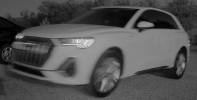
bigredfish
Known around here
once I get power and internet back I’ll have to post my recent experience with the 4K-X (newest Andy FW) and how I had to use 80 backlight to get rid of the noise
The great thing about this forum and community we're all part of is that with us all continuing to share settings, configs, deployments etc, we all not only expand our knowledge BUT also find break points, bugs etc that in feeding those back, give us better products like these S3's for example 
The great thing about this forum and community we're all part of is that with us all continuing to share settings, configs, deployments etc, we all not only expand our knowledge BUT also find break points, bugs etc that in feeding those back, give us better products like these S3's for example
Absolutely. It would be great if the WDR trick works, and may work for some, but the our "elephant in the room" 1/2000 shutter is still the go to starting point!
That is why I tested it first on a camera not set up for LPR because if it would allow us to run a slower shutter and get clean captures of other items, that could be a game changer and change from what most of us preach - no backlight at night!
BTW @bigredfish hope you and yours are doing well with the current weather situation
bigredfish
Known around here
Well WTF lol. Call me surprised!
Here is 1/1000 with WDR off
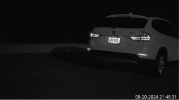
With a 0-10ms shutter and WDR at 60:
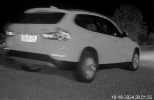
The plate is more readable than I was expecting it to be.
But I don't know if I would run it this way, especially with an overview camera to get the details. I will do more testing with a slightly faster shutter.
Here is 1/1000 with WDR off

With a 0-10ms shutter and WDR at 60:

The plate is more readable than I was expecting it to be.
But I don't know if I would run it this way, especially with an overview camera to get the details. I will do more testing with a slightly faster shutter.
Assuming the 1/1000 is your usual setup for that cannon that location ?Well WTF lol. Call me surprised!
Here is 1/1000 with WDR off
View attachment 204695
With a 0-10ms shutter and WDR at 60:
View attachment 204696
The plate is more readable than I was expecting it to be.
But I don't know if I would run it this way, especially with an overview camera to get the details. I will do more testing with a slightly faster shutter.
Assuming the 1/1000 is your usual setup for that cannon that location ?
That is correct. With all the newer 3M printed plates, I had to slow the shutter down to be able to get those.
1/2000 works great for stamped plates at most speeds and was what I ran until I started to see more printed plates. Those printed plates add a new dimension to the mix.
Keeps us all on our toesThat is correct. With all the newer 3M printed plates, I had to slow the shutter down to be able to get those.
1/2000 works great for stamped plates at most speeds and was what I ran until I started to see more printed plates. Those printed plates add a new dimension to the mix.
Parley
Known around here
I run my license plate cameras in b/w at night. Color during the day. I have other cameras that can identify the car if need be.
Exactly the way. Have plate capture set on 1 cam to make sure you get key evidential information then have your secondary and tertiary cams for identifying features (model, color, make etc) then I also advocate for a PTZ (depending on deployment, target requirements, threat model to location etc) for the money shot of faces through car windows, tracking individuals etc.I run my license plate cameras in b/w at night. Color during the day. I have other cameras that can identify the car if need be.
